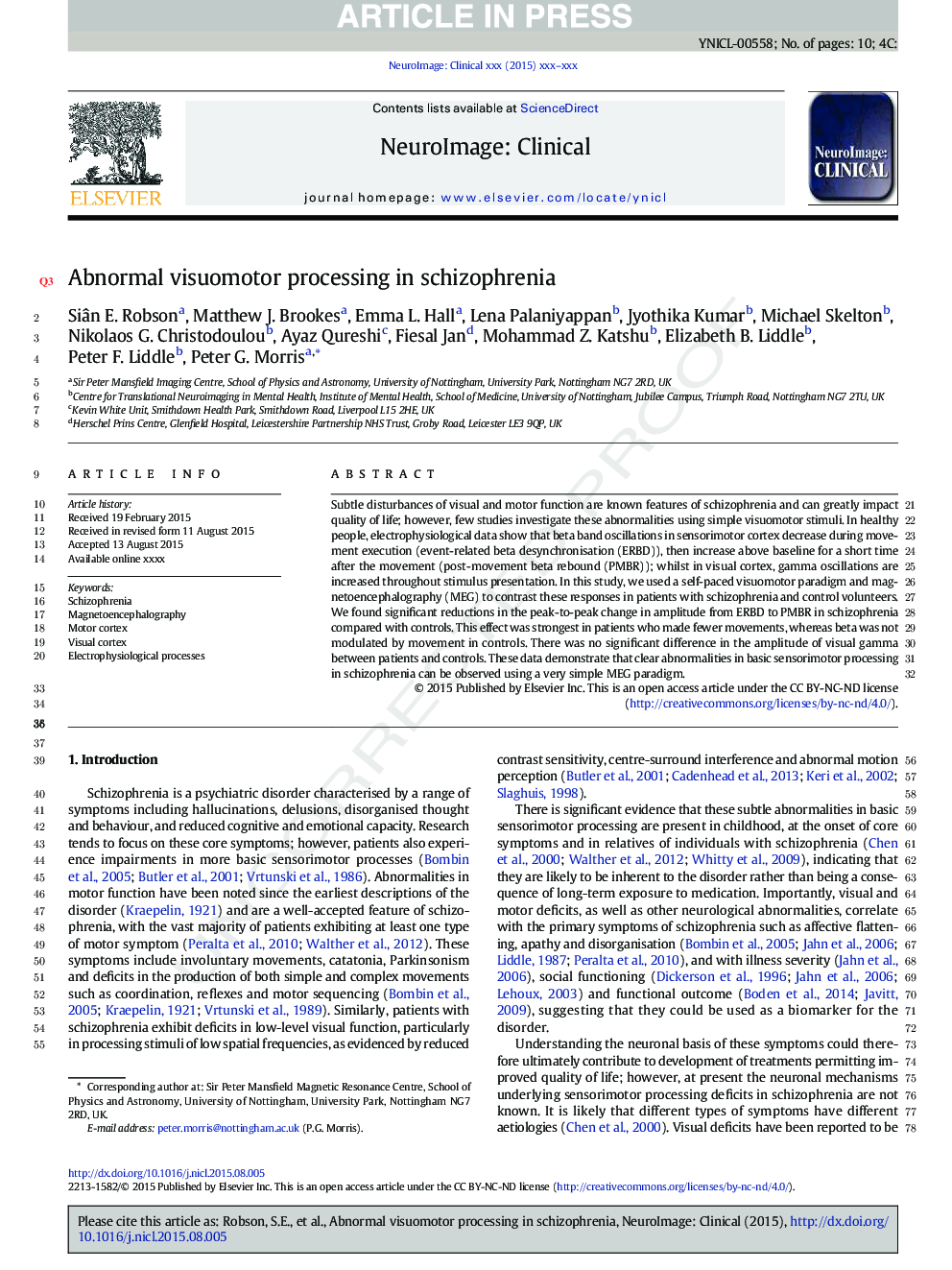| Article ID | Journal | Published Year | Pages | File Type |
|---|---|---|---|---|
| 8689047 | NeuroImage: Clinical | 2016 | 10 Pages |
Abstract
Subtle disturbances of visual and motor function are known features of schizophrenia and can greatly impact quality of life; however, few studies investigate these abnormalities using simple visuomotor stimuli. In healthy people, electrophysiological data show that beta band oscillations in sensorimotor cortex decrease during movement execution (event-related beta desynchronisation (ERBD)), then increase above baseline for a short time after the movement (post-movement beta rebound (PMBR)); whilst in visual cortex, gamma oscillations are increased throughout stimulus presentation. In this study, we used a self-paced visuomotor paradigm and magnetoencephalography (MEG) to contrast these responses in patients with schizophrenia and control volunteers. We found significant reductions in the peak-to-peak change in amplitude from ERBD to PMBR in schizophrenia compared with controls. This effect was strongest in patients who made fewer movements, whereas beta was not modulated by movement in controls. There was no significant difference in the amplitude of visual gamma between patients and controls. These data demonstrate that clear abnormalities in basic sensorimotor processing in schizophrenia can be observed using a very simple MEG paradigm.
Related Topics
Life Sciences
Neuroscience
Biological Psychiatry
Authors
Siân E. Robson, Matthew J. Brookes, Emma L. Hall, Lena Palaniyappan, Jyothika Kumar, Michael Skelton, Nikolaos G. Christodoulou, Ayaz Qureshi, Fiesal Jan, Mohammad Z. Katshu, Elizabeth B. Liddle, Peter F. Liddle, Peter G. Morris,
